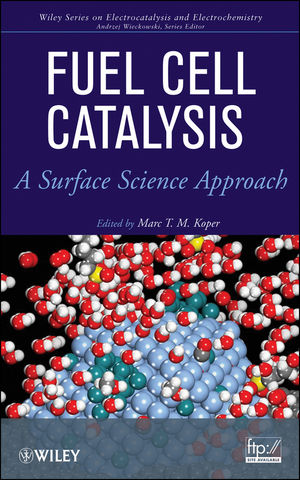Fuel Cell Catalysis: A Surface Science ApproachISBN: 978-0-470-13116-9
Hardcover
720 pages
April 2009
 This is a Print-on-Demand title. It will be printed specifically to fill your order. Please allow an additional 15-20 days delivery time. The book is not returnable.
|
||||||
Wiley Series on Electrocatalysis and Electrochemistry
Fuel Cell Catalysis A Surface Science Approach
A Core reference on fuel cell catalysis
Fuel cells represent an important alternative energy source and a very active area of research. Fuel Cell Catalysis brings together world leaders in this field, providing a unique combination of state-of-the-art theory and computational and experimental methods. With an emphasis on understanding fuel cell catalysis at the molecular level, this text covers fundamental principles, future challenges, and important current research themes.
Fuel Cell Catalysis:
- Provides a molecular-level description of catalysis for low-temperature polymer-electrolyte membrane fuel cells, including both hydrogen-oxygen cells and direct alcohol cells
- Examines catalysis issues of both anode and cathode such as oxygen reduction, alcohol oxidation, and CO tolerance
- Features a timely and forward-looking approach through emphasis on novel aspects such as computation and bio-inspiration
- Reviews the use and potential of surface-sensitive techniques like vibrational spectroscopy (IR, Raman, nonlinear spectroscopy, laser), scanning tunneling microscopy, X-ray scattering, NMR, electrochemical techniques, and more
- Reviews the use and potential of such modern computational techniques as DFT, ab initio MD, kinetic Monte Carlo simulations, and more
- Surveys important trends in reactivity and structure sensitivity, nanoparticles, "dynamic" catalysis, electrocatalysis vs. gas-phase catalysis, new experimental techniques, and nontraditional catalysts
This cutting-edge collection offers a core reference for electrochemists, electrocatalysis researchers, surface and physical chemists, chemical and automotive engineers, and researchers in academia, research institutes, and industry.



